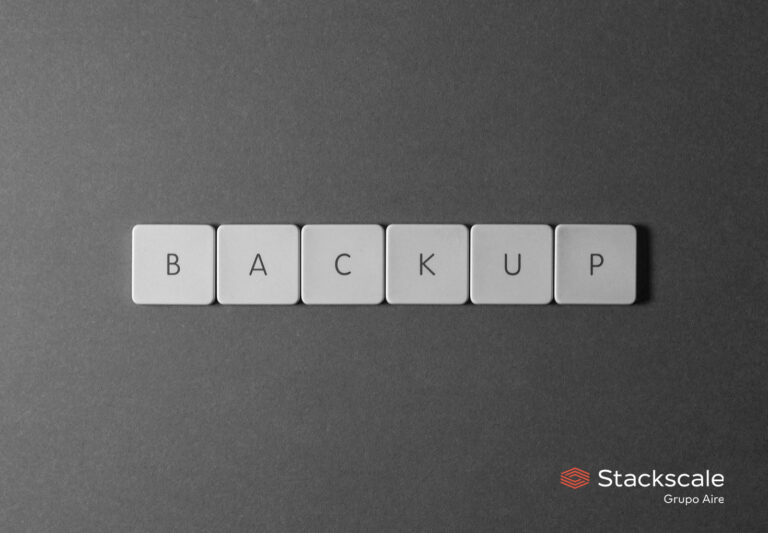The 95th percentile bandwidth metering method, also known as “burstable billing”, is the most effective method used for metering and billing bandwidth usage. That is probably why it has become a standard among most Internet Service Providers (ISPs) worldwide. This flexible method avoids penalizing customers for data transfer peaks and helps providers reduce their infrastructure and management spending. These are some of the reasons why most providers, like Stackscale, use this system to meter and bill their customers’ bandwidth usage. In this article, we will cover what is the 95th percentile method, its features, functioning and some traffic examples.
95th percentile or Burstable billing
As we have mentioned before, the 95th percentile method is a way to meter and bill the bandwidth used by different machines hosted by an ISP. It aims to offer the best balance between scalability, cost and volatility. Burstable billing is one of the most popular bandwidth metering methods, because it both favors customers and helps service providers reduce their infrastructure and management costs.
The 95th percentile method allows customers to exceed their commit rate for brief periods of time without a financial penalty nor the need of purchasing more bandwidth.
The 95th percentile metering system is used by providers offering diverse types of services — bare-metal servers, cloud hosting, colocation services, etc. Its goal is to guarantee the purchased bandwidth fits the customer’s needs; without overestimating or underestimating resources.

All the machines provided by the ISP use an amount of bandwidth that is billed to the customer, according to a base commit rate established on the SLA. So, when a customer exceeds the committed amount, his service provider must bill that excess of bandwidth usage. To do so, favoring the customer, most providers use the 95th percentile method and do not bill all the Mbps customers burst beyond their base commit rate.
How does the 95th percentile method work?
To sum up, the 95th percentile method samples data transferred over the network every 5 minutes and, when finished, discards the top 5% of the traffic. This way, unusual traffic peaks are removed from the final bill. But, let’s see how the 95th percentile method works in detail:
- Step 1: The system samples data transferred every 5 minutes and stores the values of each 5-minutes interval in a database (in Mbps). In order to meter the average rate of an interval, the bits transferred during 5 minutes are divided by its duration (300 seconds).
- Step 2: With the samples stored during a month (understood as a 30-days period) a chart is created to verify the evolution of bandwidth usage. In this chart, data is sorted from lowest to highest.

- Step 3: Throughout a month, approximately 8.640 samples are taken from each machine. From these, the top 5% is discarded (around 432 samples or 35 hours of a 30-days billing period).
- Step 4: After discarding that percentage, the highest value is taken as the month’s bandwidth usage. If this value does not burst beyond the base commit rate purchased by the customer, the ISP does not bill any extra bandwidth. However, if after discarding that top 5% the customer has exceeded his committed data rate, that excess is billed.
This metering method is designed for favoring the customer and not penalizing him for data transfer peaks. For instance, peaks when posting a news on a media or blog, or when launching a new product on an eCommerce. The 95th percentile allows the customer to exceed the limit of purchased bandwidth during short periods of time.
Normal traffic pattern
Most customers’ bandwidth usage is minimal both during weekends and off-business hours during the week. However, it follows a curve during business hours and it even doubles during brief periods of time throughout the day. So, the 95th percentile method helps adapt the commit rate more efficiently and realistically. As exceptional spikes are kept out of the bill once the top 5% of the bandwidth usage is discarded. In case that a customer, after discarding that top 5%, is far beyond its commit rate; he should consider adjusting it so that it fits its real needs.
Other methods for metering bandwidth usage
Another metering alternative is to meter a server’s or website’s traffic by GB transferred. But, as a rule, customers will end up paying much more this way if their traffic volumes/bandwidth are very high. Other alternate bandwidth metering and billing methods are the Committed Information Rate (CIR) and the Actual Throughput billing.
For further information about this bandwidth metering method, which is a standard among most of the ISPs worldwide, you can read the Burstable billing article on Wikipedia.




